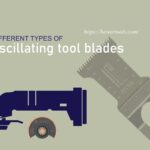Sanding a wooden project is like the icing on the cake. It’s not the part of the construction, but without it, the actual build-up is off-track. That’s why carpenters and DIYers alike try to put great effort into sanding the wooden surface.
Although it’s not quite smooth work to do, there are some tools to help you reduce the hassle. Wood sanding power tools belong to such a category. Using a power sanding tool can tremendously ease up your work. But which one to choose as there are a number of different types of wood sanders?
That’s what we are going to focus on today. Stay tuned till the end to find out more about different sander types and which one to use when!
What Is Wood Sander
A sander is a power tool that uses sandpaper to smoothen the surface of any wooden project. You can attach the sandpaper to the sander, and it will rotate over the surface with electric power. Some sanders are even run by compressed air, as well. Depending on the type of work, different wood sanders are used.
When to Use a Wood Sander
Traditionally, woodworkers used hand sanders for their regular sanding works. Now, hand sanders are typically well suited for small-scale jobs and fragile projects. But for larger-scale works, there’s very little room for any other tools except for an electric wood sander.
Now, there are many areas where you can apply your sanding machine. Here are some of the commonly used projects.
Furniture Making
Furniture comprises many independent parts that are of different shapes and sizes. So crafting a piece of furniture would require almost all types of sanding tools. This is one of the major applications of power sanding tool.
Cabinet Building
Cabinet is a bit different than furniture. While furniture has many independent parts, cabinets come with a number of interlocking components that need specialized sanding.
Staircase construction
Staircase building is one of the most sophisticated craftworks that woodworkers do. It involves a lot of special efforts to make it a piece of art. Similar to furniture, staircase building also involves a number of wood sanders.
Different Types of Wood Sanders
Although wood sanders are of multiple types, the basic categories are two. The Surface Sander and the Floor Sander.
Surface Sander
These sanders are usually small and compact in size. Surface sanders are made from aluminum and steel. These are very easily controllable with built-in variable speed options. There is a dust collector attached to this type of sander, as well.
Different common sanders like Disc sander, Orbital sander, File sander, etc., are some of the common Surface Sander types.
Floor Sander
Floor sanders are usually larger than the surface sanders and come in two parts. A drum sander and an edger. While the drum sander does the sanding job, the edger helps the sander to reach the parts it can’t usually reach.
Type of wood sender
Apart from these primary types of sanders, the following are the common wood sanders that carpenters use. Let’s dig in!
- Random Orbital Sander
- Disc Sander
- Finishing Sander
- Belt Sander
- Rotary Sander
Random Orbital Sander
The random orbital sander is the close cousin to the regular orbital sander. Although the size and shape may not be of much difference, the working method is kind of distinct in the random one.
While the regular orbital sander can rotate in a predictable motion, the random one doesn’t. You can’t predict which way it is going to move when.
That leaves no space untouched and gives you a smoother surface. This is quite possible because of the circular sandpaper used in the random orbital sander.
That’s why you can easily use this sander on flat panels of the cabinets. Or you can use it even on stocky furniture legs.
Disc Sander
The disc sander is another tool that comes with a wide range of applications. The disc-shaped abrasive surface that you can see under the sander is what the name disc sander is derived from. Although a random orbital sander can be a disc sander, not all disc sanders can orbit randomly. Most disc sanders can rotate in a fixed motion.
Disc sander can be used in rough surfaces when you need to clear off multiple layers before going for the finer surface. A common example can be stripping paint from the wooden surface.
Finishing Sander
As the name suggests, finishing sanders come in handy when you need to finish off your work. When other sanders are done with their work, and you need to get the finest finishing look on the surface, a finishing sander is the one tool you need at this point.
Finishing sanders come with a rectangular sanding pad. You can easily select the motion between in-line and orbital.
Belt Sander
Belt sanders are typically the bad boys in the sanding job. These are used to clear off the rough surfaces of the wooden project and make way for the less aggressive sander tools to work on. Unlike regular sanders, the belt sander works in a loop system.
Rotary Sander
The rotary sander is kind of similar to the random orbital sander. It comes with a round pad, and it doesn’t vibrate like the random orbital one. The best part is, the moving pad is connected to the motor and collects the power directly from it.
As it is directly connected to the motor, the removal rate of this sander is pretty higher than other tools. That’s why it is mostly used in sanding hard paint and removing rust.
Sandpaper And Other Abrasives
While the machine is what does the rotating job, the polishing is actually done by the sandpaper used in it. Now, sandpaper or abrasives that are used in the sander has some terms that you need to memorize.
Abrasive Grit: It refers to the number of particles of abrasive per square inch of the abrasive. It can range from 40 per Square inch to even 600 per inch.
Composition: This refers to the material the abrasive is made of. While aluminum oxide is commonly used, garnet-made papers may give you the smoothest result.
Other materials like silicon carbide and ceramic are also used in abrasives.
Size: For sandpaper belts, the size is 18 to 24 inches in length and 3 to 4 inches in width. For papers, it is a rectangular sheet of 9 by 11 inches that can be divided into many parts. As for the disc, the diameter can range from 5 to even 9 inches.
Know the Wood Sander Features
Before you decide to get a wood sander for your work, here are some basic features of an electric wood sander that you need to get familiar with.
Hand grips: The grip helps you to keep the machine in control when it is vibrating. Soft grips will always make it fatigue-free to use for a long time.
Dust Collection: There is a dust collection bag attached at the end of the machine so that the wood particles that are removed are easily collected in the bag. This will ensure no mess is made in the project area.
Speed: Most electric sanders have variable speed control systems. Depending on the type of wood you are working on, you can select the suitable speed for the sanding work.
Trigger Locks: Trigger lock allows you to set the machine running without holding on to the trigger. It will run in autopilot mode when locked.
Final Words
The more you get to know about different types of wood sanders, the better you can understand which one to use for your specific wooden project. Different sanders have diverse applications.
All you need to do is find out the one that suits the sanding work you are planning to exhibit.
So, make sure you are assessing your work correctly and then going for a suitable machine. Otherwise, you will end up blaming the device which wasn’t meant for the job in the first place.
Best of luck with your woodworking projects!








